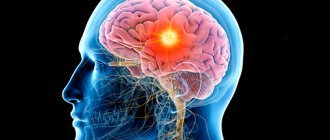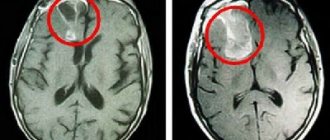Stress is an integral part of the life of any modern person who lives at a frantic pace, with a large information and emotional load. But do we always define our anxious state with a precise term? After all, stress can be different, depending on its severity and the response of the human body.
There is the concept of “distress,” for example, which more accurately reflects emotional emptiness, from which it is difficult to find a way out on your own. Let's look at what you can expect from distress and how to recognize it among other mental states.
What is distress
When a person is pressured by negative emotions for a long time, stress moves into the next stage, distress. According to the concept of stress, formulated by the Canadian scientist Hans Selye, when distressed, a person is no longer able to fight with a negative mood; the body is so weakened that it is not able to mobilize against the disease on its own. Exhaustion occurs, which Selye still considers as the third stage in the development of stress.
A mild form of stress is even useful, noted the founder of the concept, but not distress. At this stage, dangerous changes in the psyche are already occurring; the person is not able to adapt to the proposed situation. When experts say that it is necessary to deal with stress, they mean confronting distress.
A small comparison to make the point clear: doctors recommend not lowering your body temperature during colds and other diseases if it is about 38 degrees. The body, in this case, copes with viruses on its own. But when the temperature exceeds this norm, drug intervention is already required to avoid unnecessary complications. Likewise, when there is distress, one’s own strength is no longer enough to cope with the anxious state.
Distress (from the Greek dys - a prefix meaning disorder + English stress - tension) is stress associated with expressed negative emotions and has a harmful effect on health.
Distress is a destructive process that worsens the course of psychophysiological functions. Distress more often refers to long-term stress, during which the mobilization and expenditure of both “superficial” and “deep” adaptive reserves occur. Such stress can turn into mental illness (neurosis, psychosis).
The main causes of distress are:
Long-term inability to satisfy physiological needs (lack of water, air, food, heat).
Unsuitable, unusual living conditions (changes in oxygen concentration in the air, for example when living in the mountains).
Damage to the body, illness, injury, long-term pain
Prolonged negative emotions (experiences of fear, anger, rage).
Most often, distress is caused by prolonged and/or severe negative effects on the body. But often the cause of distress is not the bad life around, but a negative attitude towards what is happening.
Naturally, distress is not good for health. When it occurs, the tension becomes too strong, inhibition or excessive fussiness occurs. Difficulties in managing attention appear. It gets distracted by every little thing. Anything that distracts you becomes annoying. Often there is an excessive fixation of attention on something. A person, solving a problem, gets stuck on it, unable to find a way out. In a state of distress, memory deteriorates. A person reads a text several times, but is unable to remember it. Speech also changes. When distress occurs, various speech abnormalities occur. They are expressed in “swallowing,” stuttering, a noticeable increase in filler words, and interjections. The quality of thinking during distress clearly deteriorates. Only the simplest mental operations are retained. The thought revolves as if in a vicious circle, not finding a way out of the problem that has arisen. Consciousness narrows, so a person becomes insensitive to humor. You shouldn't joke with a person in such a state. He won't understand jokes. After all, a sense of humor involves instantly switching from one point of view to another - unusual - point of view.
Distress is excessive stress that reduces the body's ability to adequately respond to environmental demands.
Any emotional upheaval in a person is a stressor (source of stress). At the same time, the body’s resistance to adverse external influences increases due to the resulting tension. Stress mechanisms are designed to ensure the body's resistance. Distress occurs when these mechanisms are not effective enough or “exhaust their resources” with prolonged and intense stress on a person. We must try to prevent stress from turning into distress. Stress itself is a completely normal reaction.
October
22
Dmitry Seryogin
Evidence-based psychosomatics. Theory and practice
22 of October
Find out more
Causes of distress
Distress can be “earned” from a strong psychological shock, or by living in a constant, albeit insignificant, at first glance, stress regime.
The cause of distress may be psychological trauma. Moreover, people experience the same situation in different ways: someone will be “touched to the quick” and cause an emotional explosion, while others will simply pass by without taking it to heart. People's reactions to defeats and losses are completely different. A serious illness or death of loved ones can mobilize someone to survive this period, while others are simply crushed by circumstances and do not have the strength to independently break out of the severe captivity of psychotrauma.
The root cause of distress is the sensory factor, or the ability of the human psyche to adapt to the proposed realities.
- Those with low levels of sensitivity are more resistant to distress.
Some people already have a stable psyche from birth, while others gain experience in overcoming stressful situations over the years. Composure and equanimity are developed with experience; a person, having overcome various psychological traumas, becomes restrained and more balanced.
- Those who have a higher sensitivity threshold are less resistant to distress. They are emotional and unable to control their reactions. In extreme situations, they do not give an account of their behavior; it is difficult for them to pull themselves together and resist the circumstances. They do not like to leave their comfort zone; they are calmer in a familiar environment.
Experts attribute the reasons for the formation of distress to a person’s value system, his worldview and life realities. These same reasons can become the key to intelligently eliminating stress factors.
For one, it is enough to discover “signs of a terrible disease” in oneself to fall into depression, while another will steadfastly fight a real fatal illness, without falling into a psychological hole, overcoming all signs of distress.
The most common causes of distress are:
- loss of a loved one, family member, child;
- family troubles, betrayal of a partner
;
- serious illness;
- court, imprisonment;
- incapacity in case of injuries and other ailments;
- bright changes in life, for example, wedding planner
, change in status;
- long job searches, removal from position, business collapse;
- lack of money;
- constant presence near a sick person requiring care;
- expecting a child, his birth;
- sexual problems;
- change of place of residence, study, work;
- first steps in a new field;
- sleep disturbance, new daily routine or work schedule, transition to a new diet;
- a sharp abandonment of established habits, including harmful ones;
- change of usual life realities;
- dissatisfaction with something;
- loss of familiar surroundings, frantic pace of life or forced inaction;
- dissatisfaction with oneself and the environment;
- loss of interest in life.
Obvious sources of distress are emotional and psychological overload. It was noted above that people’s reactions to the same situation can be completely different. But at the same time, any person is better able to endure one terrible shock than a large number of stressful situations that constantly haunt him.
1.What is acute respiratory distress syndrome, or ARDS?
Acute respiratory distress syndrome (ARDS) is a rapidly developing and life-threatening condition in which the lungs are so damaged that they can no longer perform their direct function of oxygenating the blood.
Causes of acute respiratory distress syndrome, or ARDS.
ARDS can occur when small blood vessels in the body, including those in the lungs, are damaged due to injury or severe inflammation. As a result, the lungs lose their ability to fill with air and cannot provide oxygen to the bloodstream.
Damage to the lungs can be direct or indirect. Direct lung injury
possible, for example, in the following situations:
- Inhalation of smoke or toxic chemicals;
- Inhalation of stomach contents into the respiratory tract (aspiration);
- Drowning;
- Pneumonia;
- Lung infections.
Indirectly
affect the condition of the lungs and
cause ARDS
:
- Bacterial blood infection (sepsis);
- Drug overdose;
- Large number of blood transfusions;
- Being on artificial circulation;
- Infection or irritation of the pancreas (pancreatitis);
- Severe bleeding due to injury (for example, as a result of a traffic accident);
- A strong blow to the chest or head.
In practice, the most common causes of ARDS are sepsis, traumatic injury, or pulmonary infections such as pneumonia. However, it should be noted that the presence of these factors does not necessarily indicate the imminent development of ARDS. Each case is individual, and the pathological process may well not begin.
A must read! Help with hospitalization and treatment!
Types of distress
There are several types of distress:
1. Emotional and psychological distress
manifests itself as a person’s reaction to what is happening around him. Its occurrence is influenced by accumulating problems, the emotional background, and events occurring in society to which the individual is forced to react. As a result, with this type of stress, a person’s relationships with the environment deteriorate.
2. Physiological distress
due to the influence of negative conditions in which the individual finds himself. Another reason is unmet needs: loneliness, when a person does not feel protection and love, malnutrition, lack of water or other vital factors. With this type of distress, the entire body suffers, it cannot sleep normally, and disturbances in the functioning of organs appear.
It is unlikely that you will be able to cope with physiological distress on your own, even if you eliminate the root cause of the disease. Suppose a person has adjusted his diet, diets and refusal to eat - this is all in the past, but the body cannot readjust itself instantly, it is feverish, distress will not just go away, and it will no longer be possible to cope without special help.
3. Chronic distress
is perceived as something ordinary. No matter what happens around, a person accepts it as the norm, he lives in a constant stressful situation until a nervous breakdown occurs. A person can fall into deep depression, even suicide is possible.
All three types of distress drain the body, they are dangerous, and specialist intervention is necessary to eliminate the symptoms.
Stress and distress: what is the difference and is it dangerous?
Illustrative photo: Pixabay.com Humans have been faced with stress since birth. However, stress, despite the prejudiced attitude towards it, can be our ally. Yes, this is not a mistake, namely, an ally. Let's find out why and in what cases.
The term “stress” has long been known in the medical community. Its discoverer is considered to be the scientist and endocrinologist Hans Selye.
In 1936, the doctor began his research and his numerous labors were not in vain. In 1949, Hans Selye was nominated for the Nobel Prize. And in 1976, the first institute for the study of stress opened in Canada. Selye became its leader.
Today we have quite a lot of information about stress. About its negative impact on the body, which leads to chronic diseases. But there is good news, not all stress leads to neuroses and diseases.
Signs of distress
Distress shakes the emotional background of the individual and causes a lot of sensory experiences that are very different:
1. At the beginning, a person develops anxiety, he becomes restless, and is overcome by a feeling of fear. All these emotions are associated with the cause of distress.
2. Next comes the denial of manifested emotions, the root cause of fear. The patient rejects all thoughts about his problem.
3. A person begins to understand that he has a serious problem, he admits it. At this same stage, there is a realization that he is powerless to fight on his own. He has emotional exhaustion, which a specialist will help him cope with.
Signs indicating distress:
- fast fatiguability;
- hot temper;
- aggressiveness;
- abnormal reaction: tearfulness, panicky laughter;
- indifference;
- refusal to eat;
- new hobbies;
- indifference;
- loss of interest in the environment and in oneself;
- vanity;
- anxiety;
- nervous body movements;
- sudden forgetfulness;
- physical disorders: various pains, increased sweating, tremors, lightheadedness, vomiting and similar manifestations;
- speech disorders;
- confusion in thoughts;
- drop in libido.
Independent attempts to get out of a state of distress are fraught with serious consequences, this must be remembered.
An incorrect approach to the problem leads to such severe psychological problems as depression, neuroses, anxiety disorders, and psychoses.
Incorrect behavior tactics when distress manifests itself:
- Panic, which prevents a sober look at the situation from the outside, in which logic is turned off and a person ceases to believe in his own abilities.
- Aggressive behavior, destructive activity directed at oneself. Behavior that causes conflict situations, unreasonable anger.
- Various wild manifestations that are unusual for a healthy person.
- Dependence on something.
- Constant concentration on the cause of distress, which does not allow one to comprehend ways to solve the problem.
- The most correct tactic for distress is to avoid the conditions under which it manifested itself, or change them in a positive direction, under which the situation can change.
Respiratory distress syndrome
The development of respiratory distress syndrome in adults is characterized by a successive change of stages, reflecting pathological changes in the lungs and a typical picture of acutely increasing respiratory failure.
I (damage stage) – the first 6 hours from the time of exposure to the stress factor. As a rule, there are no complaints, clinical and radiological changes are not detected.
II (stage of imaginary well-being) – from 6 to 12 hours from the time of exposure to the stress factor. Increasing shortness of breath, cyanosis, tachycardia, tachypnea (increased breathing rate more than 20 per minute), patient anxiety, cough with foamy sputum and streaks of blood develop. Shortness of breath and cyanosis are not relieved by oxygen inhalations, and the oxygen content in the blood steadily decreases. Auscultation in the lungs – wheezing, crepitus; Radiological signs are consistent with diffuse interstitial edema.
III (stage of respiratory failure) – 12-24 hours after exposure to the stress factor. Bubbling breathing with the release of foamy pink sputum, increasing hypoxemia and hypercapnia, shallow breathing, increased central venous and decreased blood pressure. Moist, multiple rales of various sizes are heard over the entire surface of the lungs. Radiographs show the merging of focal shadows. At this stage, hyaline membranes are formed, the alveoli are filled with fibrin, exudate, decaying blood cells, and capillary endothelium is damaged with the formation of hemorrhages and microatelectasis.
IV (terminal stage) - metabolic acidosis, hypoxemia and hypercapnia are not eliminated by extremely large volumes of intensive care and mechanical ventilation. False-positive x-ray dynamics (the appearance of foci of clearing) are caused by the proliferation of connective tissue replacing the lung parenchyma. In this terminal period of respiratory distress syndrome, multiple organ failure develops, characterized by:
- arterial hypotension, severe tachycardia, atrial fibrillation, ventricular tachycardia;
- hyperbilirubinemia, hyperfermentemia, hypoalbuminemia, hypocholesterolemia;
- DIC syndrome, leukopenia, thrombocytopenia;
- increased urea and creatinine, oliguria;
- gastrointestinal and pulmonary bleeding;
- depression of consciousness, coma.
Prevention of distress
For effective prevention of distress, it is necessary to identify the causes of its occurrence and solutions to eliminate them.
Most often, distress strikes when a person is faced with conflict situations, when he cannot somehow express himself or is not satisfied with his life: there are needs, but there is no way to realize them. The most important thing is to find the causes of distress, break them down and understand whether they can be overcome or the situation in which they manifest themselves can be changed. Unfortunately, not all causes can be eliminated by the person himself. After all, the economic crisis, which can bring anyone to distress, cannot be corrected by one person. This cause of distress should be accepted and forgotten about, if possible. If personal problems are the cause of anxiety, you can try to solve them on your own.
Prevention of distress should be as individualized as methods of dealing with it. There is no one brilliant plan on how to solve the psychological problems of all people equally, because the reasons are personal.
Statistics say that the most common cause of distress is the sphere of a person’s fulfillment, his work activity. Here are some tips to help prevent distress if work-related issues are at the root of your problem.
1. Going to work every day, overcoming yourself, is a direct road to distress. Are you unattracted and frustrated by the conditions at your workplace? It is worth considering alternative options or somehow trying to change them.
2. Enter into dialogue with colleagues and superiors. There will be no benefit from complaining and whining; it’s better to try to solve the problem together.
3. You should not belittle or, conversely, overestimate your capabilities. Maybe you are carrying an unbearable burden? Tactfully refuse what you are not able to complete on time, for example. If you correctly justify your refusal, no one will suspect you of lack of professionalism.
4. Always try to fully understand the task assigned to you. For this purpose, there are experienced colleagues or superiors; do not hesitate to clarify if necessary, you will only benefit from this.
5. Try to create conditions at work under which success will be ensured for you. To do this, do not stoop to conflicts, try to solve problems immediately, without leaving the situation. This will make your life much easier, because you won’t have to justify yourself based on the results; you’ve already discussed the problem with your colleagues and found a way out.
6. A person copes better with his activities if the work process is organized correctly: intense work is replaced by short, but much-needed rest. A 10-15 minute break twice a day is the necessary release.
7. Live by the principle - those who do nothing make no mistakes. Every mistake you make is an experience. Don't get hung up on them, just analyze the reason for the failure and move forward.
8. A person needs emotional release. Try to control your unreasonable aggression, anger and irritation without hurting others.
9. Leave personal things at home. At work there are only labor relations.
Feeling sorry for yourself, being offended by others, complaining about circumstances, it is impossible to overcome the causes of distress. These methods also cannot be called the prevention of psychological problems. Don’t listen to your loved ones if they reassure you by looking for someone else to blame for your failures. Look at the situation adequately, admit your mistakes and responsibility.
Video - Stress and Distress
Learn to relieve tension, unload your psyche in time - this is an effective prevention of distress. Everyone has their own individual way of relieving stress: for some, playing sports is suitable, for others, walking in nature calms them down.
Spa treatments, massage, love, a favorite movie or an interesting book - there are plenty of opportunities for relaxation and relaxation.
Proper sleep and wakefulness, a healthy diet, and a sufficient amount of vitamins will help the body cope with stress and become a reliable support in future shocks.
Prevention
Prevention involves identifying the causes of distress and eliminating them. The most popular reasons are conflicts, unmet needs, and unrealized potential. It is important to analyze the reasons, divide them into those that are within the control of the individual and those that are not. For example, one person cannot change the crisis in the country. This means that this fact must be accepted and devalued, but if a person is bothered by frequent conflicts in the family, then he may well learn to overcome and resolve them.
Prevention, like the fight against distress, requires an individual approach. The causes of stress are subjective, so it is impossible to create a general and universal plan for all people.
According to statistics, the work environment is the main source of stress. Follow these guidelines to prevent distress at work:
- If you are not satisfied with the working conditions, then think about whether there are prospects for changing them, whether it is worth fighting for this place.
- Discuss problems with colleagues and management. Don't complain or blame, discuss rationally.
- Correctly assess your capabilities and abilities, do not take on too much, and do not be afraid to tactfully refuse unbearable assignments. Give reasons for refusal.
- Feel free to clarify the information and ask again. Seek certainty and clarity.
- Don't create situations of failure for yourself. If there is a conflict in roles (work assignments), discuss it immediately, do not let the situation escalate to the point where you cannot cope and find yourself at fault.
- When working hard, take rest and breaks. Two breaks of 10-15 minutes per day are enough.
- Learn to accept your mistakes and perceive them as experience. Work through the reasons, don't dwell on failures.
- Learn to give vent to your emotions. Deal with anger, aggression and irritation in a socially acceptable way.
- Do not mix personal and work relationships.
Self-pity, blaming circumstances or other people, and resentment are ineffective methods of overcoming and preventing stress. Very often, family or friends do a disservice to a person by reassuring him by inappropriately blaming others. It is important to rationally understand the situation and acknowledge your responsibility.
Regular unloading and stress relief is a very good idea for preventing distress. Ways to relieve tension are selected individually: sports, walks, sex, massage, reading, watching a movie, a bath with aromatic oils, watching a movie, etc. The more senses that are involved at the same time, the better. Common methods of relaxation are proper sleep and nutrition, and taking vitamins. The purpose of the activities is to restore resources and prepare the body for new loads.
Stress and distress
Stress is perhaps the cornerstone of the severe course of most diseases. The reaction of stress to the human body itself is adaptive in nature, i.e. We need stress to stay in good shape. If the stress is excessive, then this is already distress. Distress, unlike stress, is destructive and does not help adaptation in any way.
Stages of stress. In response to any irritant, our body enters the alarm stage. At this stage, the body’s defenses are mobilized to overcome the negative impact. And as a result, at the next stage of resistance, our body successfully copes with stressors, i.e. adapts. But if the action of the pathogenic stimulus continues, and the body’s defenses are exhausted, the third stage begins - the stage of exhaustion. And this is already distress - stress that our body could not “digest.” This is an example of chronic stress. During acute stress, the stage of resistance is very weakly expressed or absent, and exhaustion immediately occurs, leading to death.
What's important here:
- Any impact on our body, mental, chemical or physical, is stress. According to Hans Selye's theory of stress, any emotion is stress.
- We do not determine the reaction to stress, but our body has one or another resistance to a certain type of stress. Don't blame patients for not being able to cope with their illness. Perhaps changes in lifestyle caused by the disease are distressing for them, and hyperglycemia is just stress. We don't know which stressor will be critical.
- Stress is draining. From a physiological point of view, our body at birth has 100% energy reserve to overcome stress. After each stress, our reserve decreases to, say, 94% or lower, but never recovers to 100%. And we already meet the next stress with a margin of 99.9% or less. When our supply of stress-resistant energy drops sharply or has decreased irrevocably, we begin to get sick. It’s hardest when it’s the same stressor. We need to switch. The most severe stressors: immobilization, lack of time, disruption of the biological cycle, changes in living conditions and established life stereotypes.
Causes of distress:
- Poor personal psychological boundaries.
- Bad Timemanagement.
- A destructive belief about yourself or the world around you. For example, the belief that rest is not needed; the belief that one should not show one’s experiences and thoughts to others.
The most severe stressors: immobilization, lack of time, disruption of the biological cycle, changes in living conditions and established life stereotypes.
Prevention of distress.
- An average level of motivation is important for high productivity.
- Reduce your load when you feel worse or better;
- Psychotherapy. Thoughts give rise to emotions, and any emotion is stress;
- Life is about adapting to expectations.
- Distinguish between “good/bad” stress:
- bad – prolonged, tense;
- good – sharp, mobilizing.
- Learn something you haven't done before:
- removes old neural connections and forms new ones;
- the habitual stimulus changes and along with it the habitual debilitating tension;
- Alternate types of activities;
- Sleep, sex, meditation.
Erema Andrey Vladimirovich, psychotherapist
psychiatric department
What is distress in psychology
In fact, “stress” is a complex and multicomponent phenomenon. All living organisms experience stress in one form or another, which distinguishes them from inanimate matter: any organism is capable of feeling irritation and responding to it.
For a person in general, psychologists call stress a beneficial phenomenon, since it forces a person to act, stimulates mental, mental and volitional abilities. In the same way, any infection, including vaccination, is stressful for the physical body, while it triggers the immune system.
Distress
is a stage in the development of stress that involves exhaustion. Distress in psychology is a state when a person is no longer able to counteract irritation coming from outside.
The mental organism, therefore, loses the ability to adapt to new conditions. Once again, a match can be found in physical health. It is known that temperature below 38 degrees (subfertile) cannot be brought down, but above this indicator it is necessary; at subfertile temperatures, the body actively fights stress, using its available resources, and above 38 degrees, distress sets in, when only medicinal intervention can help the body.
This explains that when we experience stress, we don’t even think about turning to a psychologist for help - we are confident that we can handle all the problems ourselves. And at the moment when we seek help from a specialist or from friends, we are experiencing distress.











